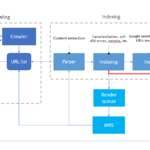Strength Training Simplified: Foundations, Science, and Periodization Explained
Introduction: Your Roadmap to Smarter, Safer, Stronger Strength Training
Are you looking to begin your strength training journey but feel unsure where to start? Or perhaps you’ve hit a plateau and want to take your training to the next level? Either way, building a solid foundation and understanding the science behind effective strength training can significantly improve your results, reduce the risk of injury, and help you reach your fitness goals faster.
This comprehensive guide covers everything from foundational movements to advanced periodization techniques, helping you train smarter—not just harder.
What is Strength Training? (Keyword: What is strength training)
Strength training, also known as resistance training, involves exercises designed to improve muscular strength and endurance by working against some form of resistance—such as free weights, resistance bands, machines, or even your own body weight.
The core principle of strength training is progressive overload—challenging your muscles beyond their current capacity so they adapt and grow stronger over time.
The Science Behind Strength Training
Understanding the physiological adaptations from strength training can help you maximize its benefits:
1. Muscle Fiber Activation
Strength training targets both major types of muscle fibers:
- Slow-twitch (Type I): Great for endurance and sustained activity.
- Fast-twitch (Type II): Responsible for explosive power and strength.
With consistent resistance training, these fibers undergo muscle hypertrophy—a process where muscle fibers increase in size, contributing to greater strength and visual definition.
2. Neuromuscular Adaptations
In the initial stages of strength training, your body doesn’t just build muscle—it becomes more efficient. Your central nervous system (CNS) improves its communication with your muscles, enhancing coordination, stability, and force production.
3. Hormonal Responses
Strength training boosts the production of key anabolic hormones:
- Testosterone – crucial for muscle development.
- Growth Hormone (GH) – supports tissue repair and muscle growth.
- Insulin-like Growth Factor-1 (IGF-1) – stimulates muscle protein synthesis.
These hormonal responses depend on factors like training volume, intensity, and rest intervals, which is why a structured plan is key.
Key Principles of Strength Training
1. Progressive Overload
To build muscle and strength, you must continuously challenge your muscles by:
- Increasing weight
- Adding more reps or sets
- Decreasing rest time
- Enhancing control and range of motion
Without this gradual increase, your body adapts and progress stalls.
2. Specificity
Training should be aligned with your goals. For instance:
- Want to improve your bench press? Focus on chest and triceps.
- Training for sprint speed? Include explosive lower-body exercises.
3. Recovery and Rest
Muscles grow outside the gym—during sleep, rest days, and recovery periods. Overtraining can lead to fatigue, hormonal imbalance, and even injury.
Optimize recovery with:
- 7–9 hours of sleep per night
- Active recovery techniques (stretching, foam rolling)
- Proper nutrition—especially protein, carbs, and hydration
- At least 48 hours before training the same muscle group again
4. Individualization
Your training should reflect your:
- Age and fitness level
- Medical/injury history
- Lifestyle and schedule
- Specific goals (e.g., fat loss, muscle gain, endurance)
Tailored programs are far more effective than generic routines.
Building a Strong Foundation First
Before lifting heavy or trying complex moves, master the basics. A solid foundation includes:
- Learning proper technique for key lifts: squats, deadlifts, overhead press, bench press
- Understanding body mechanics and posture
- Improving mobility, core strength, and coordination
Poor form increases the risk of injuries and slows your progress. Start with light weights, get comfortable with movement patterns, and gradually increase intensity.
Understanding Periodization in Strength Training
Periodization is the planned variation of training variables (volume, intensity, rest) to optimize performance and avoid plateaus.
Here are the most effective types:
1. Linear Periodization
- Starts with high volume, low intensity
- Gradually shifts to low volume, high intensity
- Great for beginners building strength progressively
Example:
Weeks 1–4: 3 sets of 12 reps at 60% 1RM
Weeks 5–8: 4 sets of 8 reps at 70% 1RM
Weeks 9–12: 5 sets of 5 reps at 80% 1RM
2. Undulating Periodization (Non-Linear)
- Varies volume and intensity more frequently (e.g., daily or weekly)
- Keeps workouts interesting and adaptable
- Shown to produce better gains in advanced lifters
Example Week:
- Monday: Heavy (5 reps)
- Wednesday: Moderate (10 reps)
- Friday: Light (12-15 reps)
Benefits of Periodization
- Prevents overtraining and reduces injury risk
- Breaks through plateaus
- Boosts long-term strength gains
- Enhances recovery management
Research consistently supports periodization as more effective than random or unstructured training plans.
How to Apply Periodization in Real Life
Step 1: Set Clear Goals
Decide what you want to achieve—muscle growth, fat loss, strength, endurance, or power.
Step 2: Establish a Baseline
Assess your current fitness level. Know your 1RM (one-rep max) for key lifts, mobility, and endurance capacity.
Step 3: Structure Your Phases
Plan your training blocks:
- Hypertrophy phase: Higher reps (8–12), moderate weight
- Strength phase: Lower reps (3–6), heavier weight
- Power phase: Explosive moves, low reps, high speed
- Recovery/deload phase: Lower intensity, more rest
Step 4: Track and Adjust
Monitor your progress regularly. Adjust weights, reps, and exercise selection based on how your body responds.
Step 5: Consider a Coach
A certified strength and conditioning specialist can personalize your plan, fix your form, and help avoid plateaus.
Conclusion: Train Smart, Stay Consistent, Get Stronger
Strength training is not just about lifting heavy weights—it’s a science-backed, strategic process that involves building a strong foundation, progressing with purpose, and optimizing through periodization.
By following the key principles of progressive overload, specificity, recovery, and individualization, and combining them with smart periodization strategies, you’ll unlock long-term strength, better body composition, and improved overall fitness.
Start simple, stay consistent, and remember—strength isn’t built in a day, but it is built one smart session at a time.
Keywords Used
- strength training for beginners
- benefits of strength training
- muscle hypertrophy
- progressive overload training
- periodization in strength training
- linear vs undulating periodization
- resistance training program
- how to build muscle
- best workout program for strength
- proper strength training form
References
- American College of Sports Medicine (2018). ACSM’s Guidelines for Exercise Testing and Prescription.
- Schoenfeld, B.J. (2010). Mechanisms of Muscle Hypertrophy. J Strength Cond Res.
- Issurin, V.B. (2010). Block periodization versus traditional training theory. J Sports Med Phys Fitness.
- Fleck, S.J. & Kraemer, W.J. (2014). Designing Resistance Training Programs. Human Kinetics.
- McGuigan, M.R. et al. (2012). Strength and Conditioning for Young Athletes. Strength Cond J.
- Rhea, M.R. et al. (2002). Comparison of Linear and Undulating Periodized Programs. J Strength Cond Res.
- O’Hara, D.B. et al. (2017). The Effects of Recovery on Strength Training Adaptations. J Sports Sci Med.









